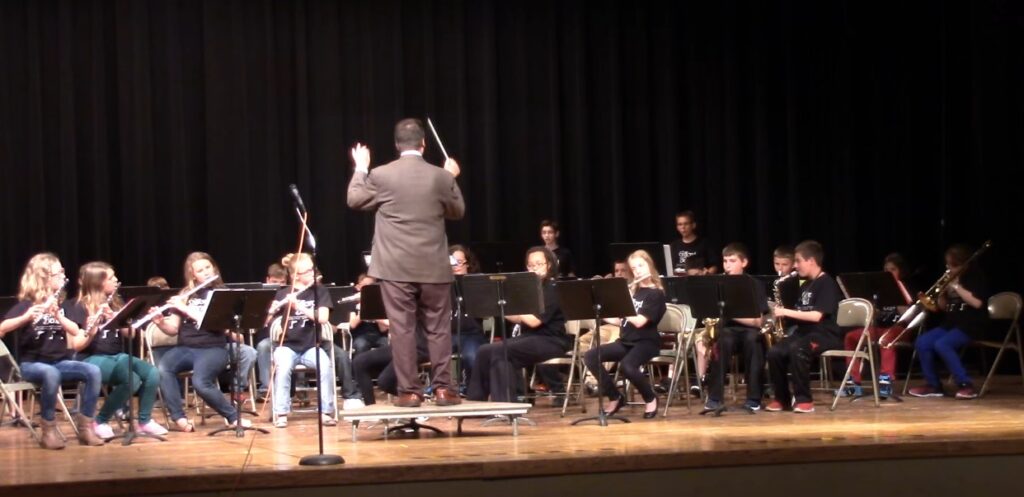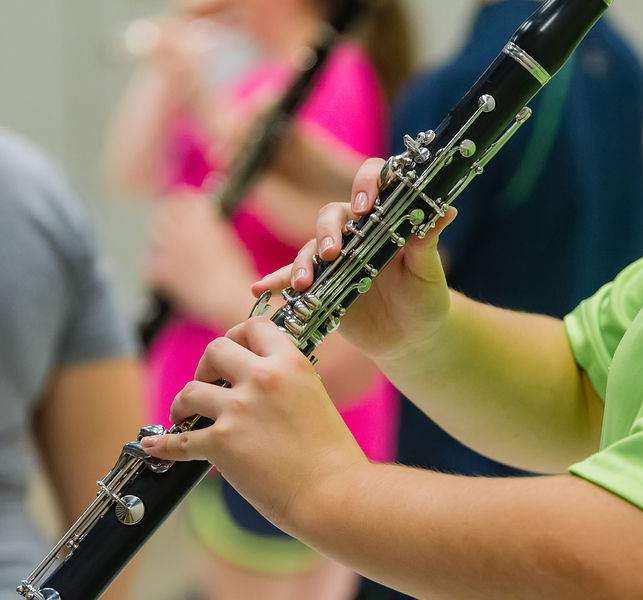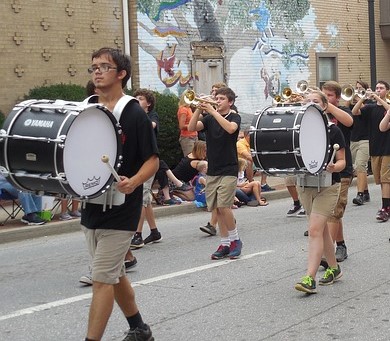Students arriving into the 5th grade are faced with a list of band instruments that can introduce them to the most common and somehow easy instruments of a band.
The goal at the end of the 5th grade would be that each student learns to play the characteristic sound of the instrument they choose initially. But the ultimate and most important aspiration should be for them to enjoy playing during the learning process!
5th Grade Band Instruments List
What are the instruments you will find in a 5th-grade school band?
- Flute
- Clarinet
- Saxophone
- Trumpet
- French Horn (when existent in the school)
- Trombone
- Percussion instruments (drums, keyboards, and others)
Each of these instruments is part of three different categories of the band: brass, woodwind, and percussion. They have their own characteristics and some could be more suitable for a 5th grader, depending on his or her physical characteristics and aptitude.

Beginning Band Instrument Selection
The process of choosing the right instrument for a 5th-grade student should be the combination of the expertise and guidance of the band director, the student’s interest and physical characteristics, as well as the participation of the parents in the process.
Some of the students will contact these instruments for the first time if they weren’t introduced to them in the 4th grade, or if they weren’t introduced at home to the plastic version of the instruments.
If not, for both parents and the children, this could be a learning process all the way.
There are however some physical characteristics of a child that can give you already an insight into what type of instrument can your son or daughter be most suitable to begin playing.
Below, we resume the most important aspects to consider when choosing a band instrument for a 5th-grade child.
The Characteristics of Each 5th Grade Band Instrument
Flute

Flutes are known for playing the highest pitch and are responsible for melody lines in a piece of band music. The melody tones surge when a small airstream is directed to an exact location on the tone hole.
It is also the smallest of the band instruments available for a student in the fifth grade.
- thin to medium lips – students with thinner lips could be more successful, due to the way the lips are placed on the flute (technical term: embouchure).
- long and thin fingers
- students with receded jaws or a teardrop-shaped lip could have more difficulty when trying to direct the air precisely
- while wearing braces flute players normally don’t have many problems while playing the flute
- children with double-jointed fingers could struggle more due to the need for agile movements
Clarinet

It is a single-reed instrument capable of playing from the highest notes to the lower ones, producing mellow tones. It can serve as a bridge for those willing to switch later to a Basson or an Oboe.
It requires that the player remains with his or her chin flat and the corners firm.
- Wider and not overly long fingers could be more suitable to play the clarinet
- Students that possess good finger skills are normally successful in playing the clarinet
- Wider fingers are better, and usually, fingers that are not overly long are better
- Similar to the flute, clarinet players with braces should not have major problems playing it
- It is not recommended for students with tiny hands students and also, children with double-jointed fingers
Saxophone

If choosing to play the sax, most certainly your son or daughter will start with the alto saxophone or the tenor sax, (depending on their size) because of its dimension. Other saxophones are just too big for most 5th grade students and are difficult to handle if they aren’t tall enough.
It can be considered at the same time an easy instrument to start with, but a hard one to master as the player needs to make continuous adjustments for it to sound good.
- Important to have enough size to handle the instrument. This is true for 4th and 5th graders which start with band instruments, even though the size won’t be a problem by the time they arrive in 6th or 7th grade.
- Good fingers ability is desirable
- Particularly small hands could be a limitation when trying to put their hands around such a large instrument
- Wearing brasses isn’t considered to be an obstacle to playing the saxophone
- Considering the weight of the instrument, a neck-strap is needed.
- Each student should be responsible for taking care of about 4 to 6 reeds of good quality. Proper care of a 10 box of reeds makes them last to four months.
Trumpet

The smallest member of the brass family is usually targeted by beginners due to only having three valves (the term for the “keys” present in each brass instrument) and supposedly easier to play.
But its aspect is in fact misleading because only having three valves makes it harder to be played. The player can only manipulate 3 valves while combining lip tension to produce the notes.
Its sound is produced while buzzing air into a small mouthpiece.
- Higher frequency focuses buzzes could be key to performing this instrument
- An underbite could be a limitation as it could seriously impede progress on the cornet
- Very narrow lips or on the other extreme, full lips, could limit the ability for playing the trumpet
- Children wearing braces might have discomfort while playing due to the need for the lips to be stretched flat across the teeth and because most beginners tend to press the mouthpiece against the lips, but after some training, little to no pressure is made while playing this instrument, making it possible for students with braces to still produce good sounds
French Horn

It is not always present in a 5th-grade introduction to band instruments.
Its sound could be described as mellow and dark and like the trumpet, it is produced while buzzing into a small mouthpiece.
This is one of the 5th-grade instruments which is more difficult to learn, and normally a student that has chosen this instrument needs great work discipline. Usually, training and instruction including private lessons outside the school are advised and needed.
- The student’s top lip should be medium to thin and cover the top teeth. A slight overbite is okay, but an underbite can severely hinder progress. The student should be able to flatten their chin with minimal instruction.
- The player’s bottom lip should not be overly full
- Braces could be problematic and cause discomfort, despite that not being impossible to make good sounds even with braces.
Trombone

It has been evolving through history, but its unique characteristic when compared to other brass instruments, is that the player uses a hand slide instead of valves. Such a slide is not notched or marked which originates the need for the player to develop his or her listening skills and muscle memory to rely on a proper location.
- Average to full shaped lips
- Longer arms would be a plus, but shouldn’t be a limitation because, after some time, most students will grow enough to reach the seventh position of a trombone. Also, the vast majority of pieces instructed in the 5th grade, don’t require this seventh position
- Braces or crooked teeth aren’t major problems because there is not much need o pressure on the lips for the larger mouthpiece of the trombone.
- Excessive underbite will limit the player’s performance
Percussion Instruments

This section of the band, allows students to play a different set of drums, keyboards, and other small types of percussion instruments. Students start with a snare drum and a keyboard but also are instructed in instruments like the tambourine, maracas, claves, bells, and triangles, among others.
- Better performances might come from gross and fine motor skills, as well as notable coordination
- Sense of rhythm can help greatly
What instruments are present in a typical 5th-grade school band?
Most commonly, these will be present: the Flute, Clarinet, Saxophone, Trumpet, French Horn, Trombone, and Percussion instruments like drums and keyboards.
